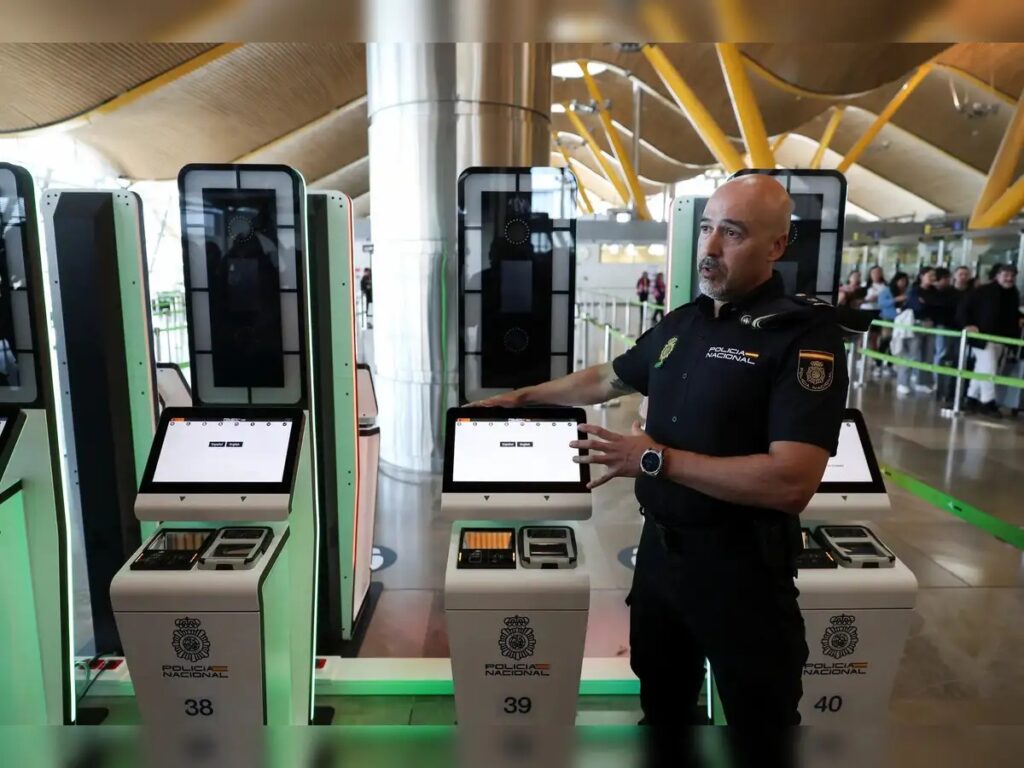The European Union begins to implement.Digital Border Systemto electronically record every arrival and departure of non-EU citizens (non-EU). This step marks a new era in border surveillance and security of the Schengen area, replacing manual, passport-stamp-based record-keeping.
This system is designed to speed up the immigration process while strengthening security across the entire territory of the European Union. Through digitization, each visitor's data, including biometrics such as fingerprints and facial photos, will be stored centrally in the Entry/Exit (EES) system.
Background and Objectives of the New System
The implementation of this system is part of the EU's security digitisation strategy, which has been approved by the European Parliament since 2017. After several delays due to technical issues and the pandemic, the project finally began to progress gradually in 2025.
The European Union assesses that the manual system is no longer effective in dealing with the sharply rising post-pandemic travel volumes. In addition, the threat of terrorism and the abuse of residence permits have become the main reason for the implementation of the digital system.
Digital Border System and Security Data
The Digital Border System records four main data categories: identity, biometric data, entry date, and exit date. In this way, the authorities can precisely determine who violates the residence permit or overstays.
EES is also connected to the Schengen Information System (SIS) and the Europol database. This collaboration enables faster detection of individuals involved in cross-border illegal activities.
In addition, this system helps speed up verification at airports and land border posts by minimizing manual interaction.
Impact on Non-EU Citizens
From 2025, every non-EU citizen entering the Schengen area will undergo an automatic registration process for the first time. After the data is stored, the next journey will be faster because the system recognizes their digital profile.
However, the initial transition is expected to cause longer queues at several major airports such as Paris Charles de Gaulle, Frankfurt, and Amsterdam Schiphol. The governments of the respective member countries are now strengthening their technical infrastructure to anticipate a surge in tourist traffic.
Reactions of Member States and Implementation Challenges
Many EU member states welcome this step, especially because it can increase security and efficiency at the external border. However, some parties highlight privacy challenges and the readiness of digital infrastructure in a certain country.
Privacy and Data Protection Issues
European digital rights organizations highlight the potential risks of biometric data misuse. They demand a guarantee that the new system will comply.General Data Protection Regulation (GDPR)the strict.
According to the European Data Protection Supervisor (EDPS), data collected must not be used for purposes other than security and must be deleted after a certain period. The European Union reiterates its commitment to the principles of transparency and public oversight at every stage of operation.
Infrastructure and Training of Officers
Countries in Eastern and Southern Europe, such as Greece and Bulgaria, still require system upgrades and staff training. The European Union is allocating additional funds to ensure the full readiness of all border crossing points by the end of 2025.
The European Commission emphasizes that technology should not be a barrier, but rather a solution for security and efficient mobility.
Economic and Social Impact

In addition to security aspects, the Digital Border System is expected to impact the tourism sector and cross-border businesses. The digital process can cut waiting time by up to 40 percent after the adaptation period is completed.
Opportunities for the Technology Industry
European technology companies such as Thales and Idemia have become the leading providers of biometric devices and data integration systems. This multi-billion-euro project also drives growth in the region's digital security industry.
The implementation of this system also has the potential to accelerate infrastructure development.smart borderIn the future, including integration with artificial intelligence to detect suspicious travel patterns.
Impact on Tourists and the Workforce
For tourists, this system will simplify travel after the initial registration. Meanwhile, for seasonal workers and international students, their data will be linked to a digital residence permit, minimizing administrative errors that were common previously.
However, there are concerns that the new operating costs will increase ticket prices or immigration service fees in the future.
Further steps of the European Union
The European Union plans to integrate the Digital Border System with a platform.ETIAS (European Travel Information and Authorisation System)in 2026. With this combination, visitors from outside the EU must obtain travel authorization before departure.
That step is similar to the system.Electronic System for Travel Authorizationin the United States, which has proven effective in strengthening security surveillance and visitor data management.
In addition, the European Commission is currently preparing a policy to broaden its use.European digital identity (EUDI Wallet)to facilitate cross-border processes within a single secure and integrated data ecosystem.
ImplementationDigital Border Systemmarking a new chapter in security and global mobility management. Although it still faces technical and social challenges, this initiative has become a milestone in the digitalization of global border governance.
Discover more from Insimen
Subscribe to get the latest posts sent to your email.










